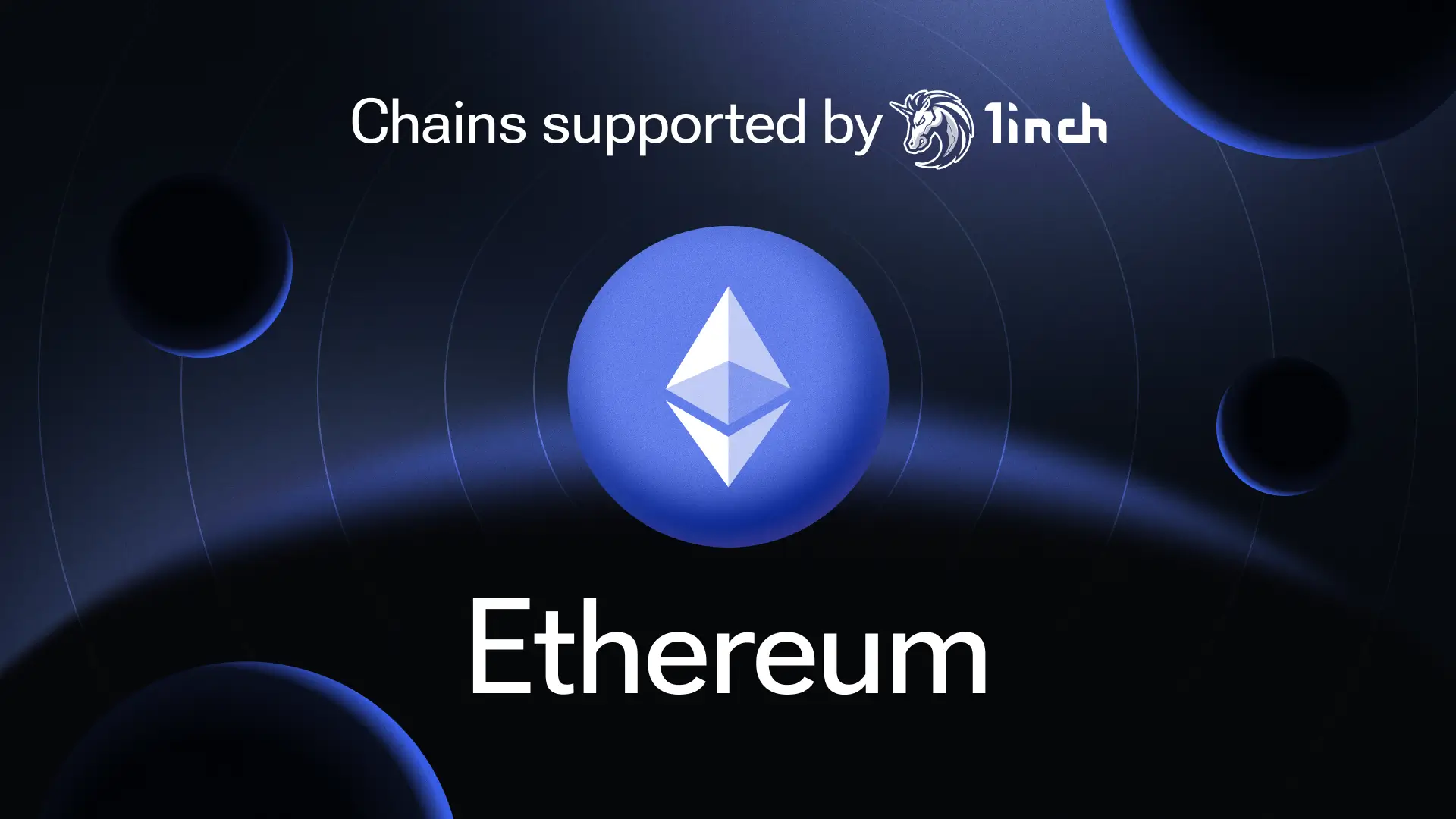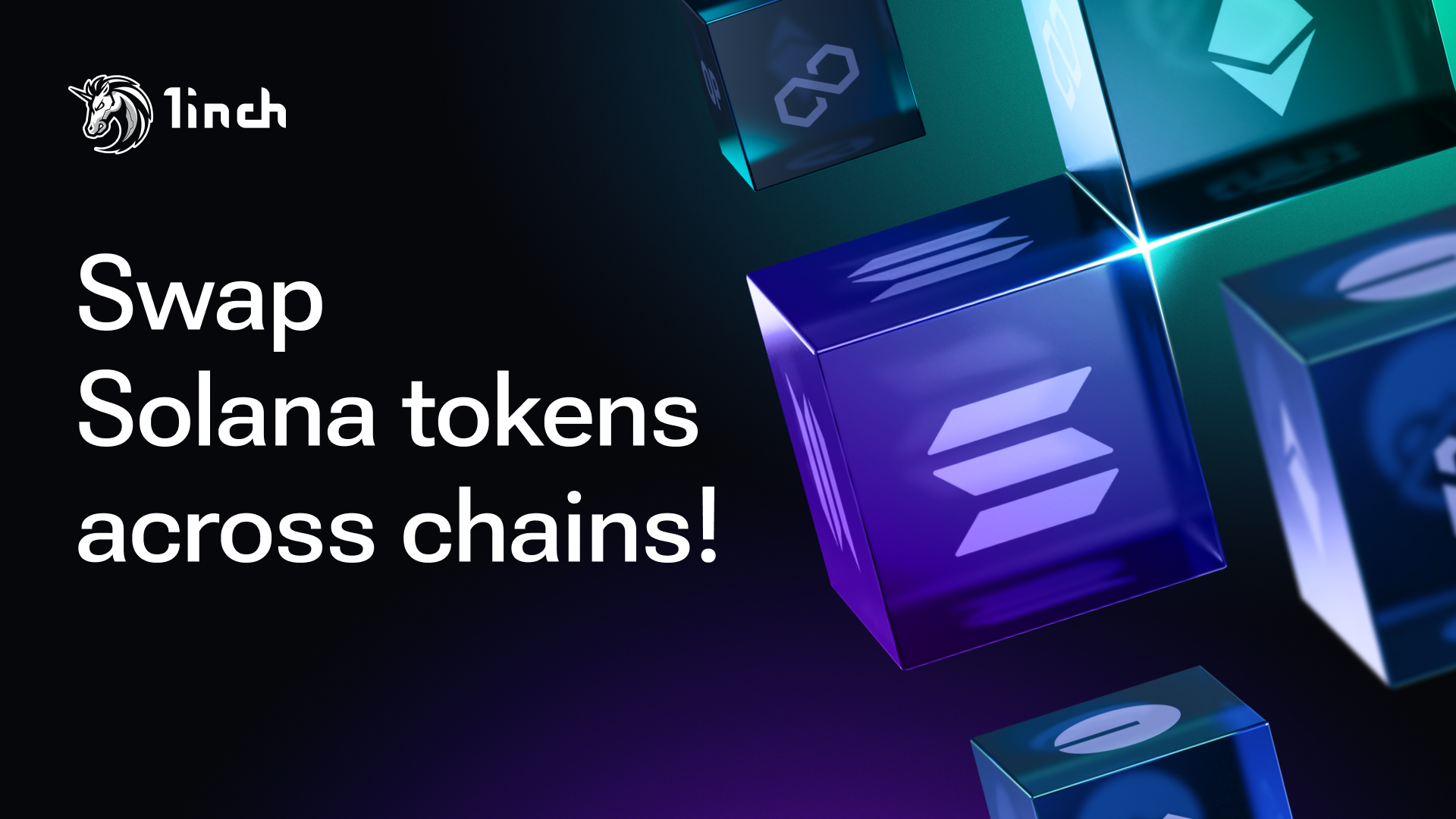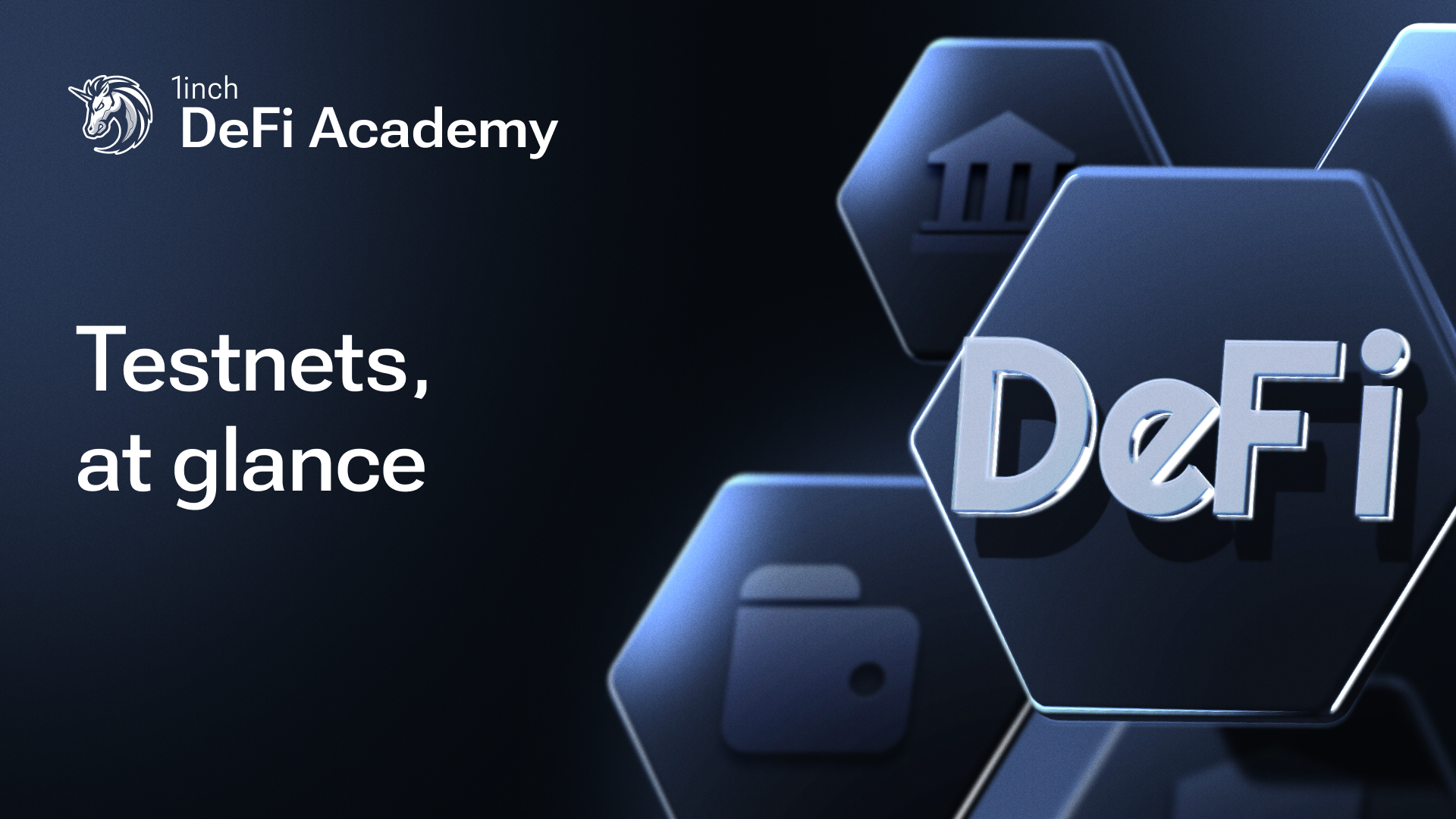Ethereum: oldest and strongest

In the second post of our series on networks supported by 1inch, we’re discussing Ethereum, often hailed as the “world computer,” one of the most innovative blockchain networks in existence.
With its advanced programmability and decentralized structure, Ethereum has empowered a new wave of digital finance and decentralized applications (dApps), transforming industries and creating novel economic opportunities.
What is Ethereum?
Ethereum is a decentralized, open-source blockchain that was designed not just for financial transactions but for creating smart contracts. These smart contracts are self-executing contracts with the terms of the agreement directly written into code, allowing developers to build applications that operate without intermediaries.
Launched in 2015 by Vitalik Buterin and his team, Ethereum has since evolved into a robust platform where dApps are thriving. This unique functionality distinguishes Ethereum from earlier blockchain projects, like Bitcoin.
At its core, Ethereum enables:
Smart contracts: Code that automatically enforces and executes agreements.
dApps: Applications offering everything from financial services to gaming.
Decentralized finance (DeFi): Financial services that run on blockchain, providing transparent and permissionless alternatives to traditional finance.
Key Features of the Ethereum Network
1. Ethereum Virtual Machine (EVM)
The Ethereum Virtual Machine (EVM) is a decentralized computer that makes smart contracts possible. When a developer writes a smart contract, it runs on the EVM, which ensures that all participating nodes can execute code in a trustless manner. This design makes Ethereum extremely versatile, allowing developers to build and deploy a wide range of applications.
2. ERC standards
Ethereum’s ecosystem uses various token standards, including the ERC-20 standard for fungible tokens and ERC-721 for non-fungible tokens (NFTs). These standards enable consistent and secure token interactions within the Ethereum network, facilitating seamless integration with platforms like 1inch, where users can swap tokens with minimal friction.
3. Gas fees
Executing transactions and smart contracts on Ethereum requires computational power, which is incentivized through gas fees. These fees, paid in Ether (ETH), the network’s native cryptocurrency, ensure that miners are rewarded for processing and validating transactions. Gas fees can fluctuate significantly based on network demand, which can impact DeFi activities, especially during periods of high congestion.
4. Proof-of-Stake (PoS) and Ethereum 2.0
Ethereum initially used the Proof-of-Work (PoW) consensus algorithm, but transitioned to Proof-of-Stake (PoS) through Ethereum 2.0 upgrades in September 2022.
PoS allows validators to secure the network by staking their ETH holdings rather than relying on energy-intensive mining. This transition made Ethereum more environmentally friendly and scalable, which benefits DeFi users by lowering network congestion and transaction costs. To learn more about the difference between PoW and PoS, check out this blog post.
Advantages of Ethereum
Security and trust: As one of the most battle-tested blockchains, Ethereum offers a high level of security for users and developers.
Interoperability: Ethereum’s standards make it easy for tokens and protocols to work together, fueling the growth of DeFi.
Developer community: Ethereum’s active developer community has contributed to countless improvements, making the ecosystem resilient and innovative.
Scalability improvements: With the Ethereum 2.0 upgrades, the network is increasingly efficient and able to handle more transactions per second, reducing fees and improving user experience.
Challenges facing Ethereum
High gas fees: Network congestion can lead to high gas fees, impacting users looking to make smaller transactions. During peak times, this can limit access to DeFi protocols for some users.
Scalability: Despite the improvements brought by Ethereum 2.0, scaling Ethereum to support global adoption remains a challenge.
Security risks: While Ethereum is secure, vulnerabilities in smart contract code can lead to losses, especially in the rapidly evolving DeFi space.
1inch on Ethereum
Ethereum was the first network, on which the 1inch DEX aggregator was made available back in 2019. Since then, 3.7 mln users have made over 22 mln swaps on Ethereum via 1inch, with a total value of more than $400 bln.
Currently, 1inch supports 57 protocols on Ethereum, including Curve, Synthetix, Sushiswap, Uniswap, Compound and many others.
Stay tuned for more deep dives into chains supported by 1inch!




























